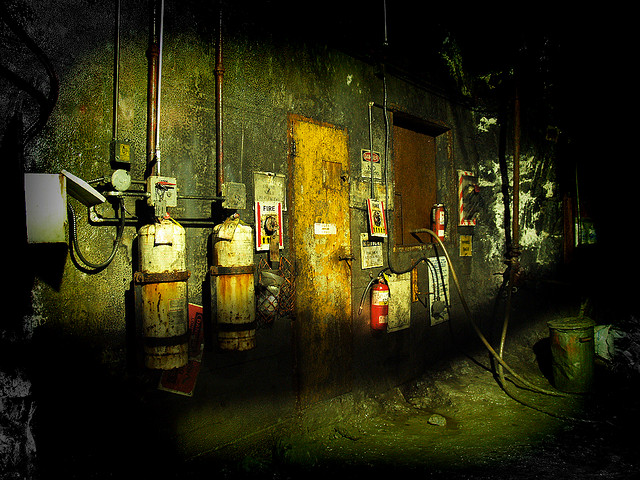Scientific excitement over “old” Ontario water

300m below ground in a Timmins, Ontario mine. Photo: eskimo-jo, Creative Commons, some rights reserved
Samples of old water from a mine in northern Ontario, generated news reports around the world this past week.
“Deep Canadian mine yields ancient water” says the BBC. “2.7-billion-year-old water may hold clues to life on Earth and Mars” says Zee news from India.
The age thing is apparently hard to nail down. Estimates range from 1 billion to the rounded-up higher number cited by the India report. The India headline also summarizes why scientists are excited.
Earth science is not my thing. Indeed, my response to some of the excitement is befuddlement: there’s a big difference between 1 billion and 2.6 billion. If scientists can’t tell which is what, what do they really know? Doesn’t water just cycle around and around? If so, what’s “new” water and what’s “old” water? Aren’t they really talking about water that was sealed away for a billion years? Wouldn’t the excitement be better called “isolated water”?
But that’s just me, being snippy. (Or finding fault with sloppy reporting?) Because this appears to be a big deal, full of exciting new possibilities.
And, actually, if you read the summary article in the journal Nature, it does call the samples being studied isolated water. Nature reports that geochemist Chris Ballentine as saying the mine samples were carefully captured without exposure to air.
The findings are “doubly interesting”, Ballentine says, because the fluid carries the ingredients necessary to support life. The isolated water supply, he says, provides “secluded biomes, ecosystems, in which life, you can speculate, might have even originated”. His colleagues are now working to establish whether the water does harbour life.
The findings may also have implications for life on Mars, Ballentine says, though he acknowledges that the idea is speculative. The surface of Mars once held water and its rocks are chemically no different from those on Earth, he says. “There is no reason to think the same interconnected fluids systems do not exist there.”
The technical article (from Nature) goes by this title: “Deep fracture fluids isolated in the crust since the Precambrian era“.
According to this Canadian report by Postmedia News science reporter Margaret Munro:
Miners drilling deep underground in northern Ontario have long known about the sparkling salty water.
It’s been bubbling out of the rocks beneath their feet since the 1880s, but no one really appreciated the significance — until now.
As Munro reports:
“This is the oldest (water) anybody has been able to pull out, and quite frankly, it changes the playing field,” says geologist Barbara Sherwood Lollar, at the University of Toronto, who co-led the team.
So, there you go. Really, really old/isolated water (from unassuming Timmins!) that could change how science understands early life on earth and (perhaps) on other planets.
This CBC summary article says team co-leader Lollar (which should perhaps be Sherwood Lollar?) will guest on CBC Radio One’s science program Quirks and Quarks Saturday, May 18th at noon.
Tags: Barbara Sherwood Lollar, canada, ecology, Quirks and Quarks, science








Timmins> Isn’t that were they used to mine asbestos, and maybe still do?
Timmins, Shania Twain’s home turf. Gold was mining was popular there and there is some cobalt. The mine I am familiar with that is there(Kidd Creek) is the core of an old volcano from which they mined copper, nickel and zinc, maybe other stuff. Ore body was discovered in late 50’s and after surface mining as far as possible they started working from a shaft, last I knew, 25 years ago. Wikipedia says they are down to 9100 feet below ground and plan to go deeper. Tahaws or Newton Falls would be different with a little bit of that kind of ore.
No need to worry about asbestos when there is plenty of silicosis in our region from local rocks.
Here’s the interview from this Saturday’s Quirks and Quarks.